Disabilities
Limb Girdle Muscular Dystrophy
September 29, 2023What is Limb Girdle Muscular Dystrophy?
Limb Girdle Muscular Dystrophy is a group of muscular dystrophies which can be inherited in various ways. It equally effects males and females and symptoms begin between 8 and 15 years of age. About 2 to 10 out of 100,000 people are affected by this muscle disorder which leads to muscle weakness and muscle wasting of varying severity. Most commonly the shoulder and pelvis muscles are affected and as it progresses the hips, shoulders, arms, legs, and back muscles all weaken. The symptoms are known to progress slowly and while there is no cure the life expectancy of an individual with this diagnosis is generally within a normal range since the heart and breathing muscles are not affected.
How do I know if my child has Limb Girdle Muscular Dystrophy?
The signs and symptoms of people with Limb Girdle Muscular Dystrophy can vary widely. Even among individuals within the same family there is a good chance that the signs and symptoms will not be the same. Since symptoms can begin at any age, it’s important to keep an eye out for these common signs throughout your child’s life:
- Inability to rise from a squatting position without using the arms for leverage
- Toe walking or walking on the balls of their feet
- A waddling gait when walking
- Difficulty running
- Joint stiffness
- Abnormal spine curvature (lordosis/scoliosis)
Because these signs and symptoms are common in other muscular dystrophies, it is critical to see a medical doctor and receive a formal diagnosis so that proper treatment can be obtained. The formal diagnosis is based on symptoms, symptom severity, age at which the symptoms began, and family medical history. Doctors will perform a series of tests including: electrodiagnostic tests, laboratory tests, muscle biopsies, imaging studies, electrocardiograms, and genetic testing to confirm their diagnosis.
What Causes Limb Girdle Muscular Dystrophy?
Limb Girdle Muscular Dystrophy is a neuromuscular genetic disorder that occurs when a faulty gene results in abnormal muscle function. Many genes have been identified as contributing to this disorder so while it can be passed from parent to child, the child also could be the first in the family to have muscular dystrophy.
What are the complications of Limb Girdle Muscular Dystrophy?
While it is rare for Limb Girdle Muscular Dystrophy to affect the heart, lungs, digestive system, or other body systems outside of the muscles, it is possible. Any time the heart or lungs are affected by muscular disorders there is a chance that life expectancy will be negatively affected.
What is the treatment of Limb Girdle Muscular Dystrophy?
While there is no cure for Limb Girdle Muscular Dystrophy there are treatments for it. Treatments range from medications that are prescribed by medical professionals to help relieve symptoms relating to Limb Girdle Muscular Dystrophy to physical, respiratory, occupational, and behavioral therapies to help reduce the process of muscle weakness and wasting. Treatment is individualized for each patient and designed to enhance quality of life.
If you child has been diagnosed with Limb Girdle Muscular Dystrophy and you are interested in learning more about how Schreiber’s Pediatric Therapies can help your child visit: http://www.schreiberpediatric.org/therapy-services/
As a nationally recognized pediatric facility, the Schreiber Center for Pediatric Development provides family-centered education and therapy programs for infants, children and adolescents with disabilities, developmental delays, and acquired injuries. Our goal-oriented approach maximizes each child’s ability to function independently within the community.
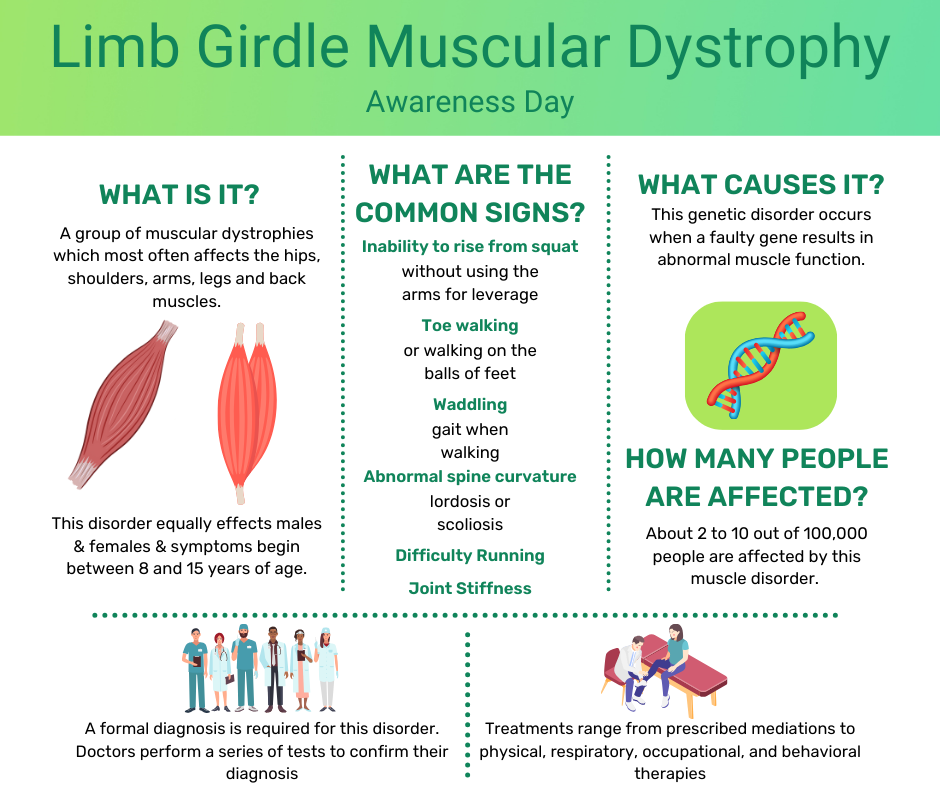
Early Intervention for Deaf Children
September 22, 2023Communication is essential for human interaction. Unfortunately, Deaf children face challenges in communication that can significantly affect their development. The good news is, early intervention during their infancy and toddler years can greatly lessen these communication barriers with the hearing world.
By providing specialized assistance in these critical early years, we have the opportunity to guide them towards a better future. From acquiring language skills to integrating socially, early intervention plays a crucial role in shaping their development.
Starting Early: Laying the Foundation
Detecting and addressing hearing loss early is crucial to establish a solid learning foundation for Deaf infants and toddlers. At Schreiber, we take pride in minimizing waiting times for children to be assessed by our dedicated pediatric therapists. Identifying the needs of Deaf infants and children promptly and offering appropriate support enhances their developmental trajectory. Early intervention acts as the key that unlocks their potential, equipping them with the tools to navigate communication effectively.
Communication Choices: Empowering Families
Empowering families to select communication methods for their Deaf children is pivotal to their success. Families can opt for American Sign Language (ASL), speech development, or a combination of approaches. By tailoring their approach to suit their child’s individual needs and preferences, families can enhance the likelihood of their child’s success.
Qualified Professionals: Guiding Growth
Based on the chosen communication method, Schreiber’s speech therapists collaborate with Deaf children to overcome communication barriers. These therapists recognize that communication extends beyond words; it encompasses self-expression, understanding, and building meaningful connections. Using innovative techniques and compassionate care, our therapists empower Deaf children to confidently navigate the world of communication.
Individualized Plans: Unleashing Potential
There’s no one-size-fits-all solution in early intervention for Deaf children. Schreiber’s speech therapists acknowledge the uniqueness of each child’s journey and create personalized intervention plans that encompass a variety of strategies. These plans cater to each child’s strengths and needs, ranging from fostering proficiency in American Sign Language (ASL) to enhancing speech development. Recognizing that progress isn’t linear, Schreiber’s speech therapists provide a supportive environment where children can explore different communication avenues at their own pace.
A Pathway and A Promise
Early intervention not only bridges communication gaps but also establishes a strong foundation for lifelong learning and success. As we advocate for inclusive and accessible child development approaches, it’s crucial for parents, caregivers, educators, and healthcare professionals to collaborate to ensure that every Deaf infant and toddler receives the necessary support to thrive on their unique journey. Early intervention isn’t merely a pathway; it’s a promise of a brighter future for every Deaf child.
If you child is Deaf and you are interested in learning more about how Schreiber’s Pediatric Therapies can help your child visit: http://www.schreiberpediatric.org/therapy-services/
As a nationally recognized pediatric facility, the Schreiber Center for Pediatric Development provides family-centered education and therapy programs for infants, children and adolescents with disabilities, developmental delays, and acquired injuries. Our goal-oriented approach maximizes each child’s ability to function independently within the community.
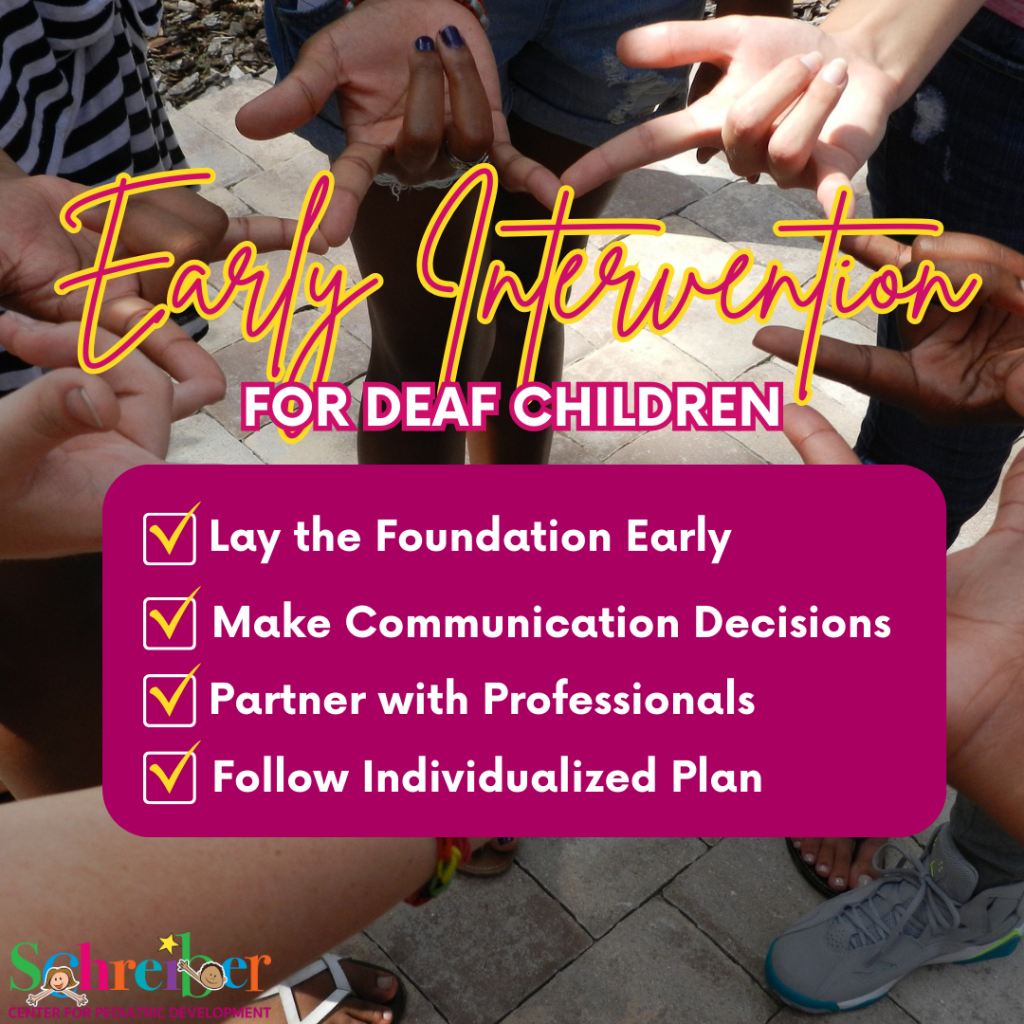
How to Support the Behavioral Health of Deaf Children
September 21, 2023Deaf children, like all children, deserve every opportunity to lead healthy and fulfilling lives. However, they often encounter unique challenges that can impact their behavioral health and overall well-being. From social isolation to academic struggles, the mental health journey for Deaf children can be complex. This post will explore the various behavioral health concerns Deaf children may face and look at different strategies to provide the support they need.
Understanding the Challenges
Social Isolation and Peer Exclusion: Communication barriers can lead Deaf children to feel isolated and make it difficult for them to form connections with their peers. They may find themselves on the outskirts of social interactions, leading to feelings of loneliness and exclusion.
Coping with Stigmas and Misconceptions: Deafness is often misunderstood, leading to stigmatization and misconceptions. These misunderstandings can impact a Deaf child’s self-esteem and self-worth.
Anxiety and Depression: The frustration of miscommunication and the pressure to fit in can contribute to anxiety and depression among Deaf children.
Academic Struggles: Inaccessible educational environments and inadequate support for children who are deaf, can lead to their academic struggles. These struggles can cause additional stress and have a negative impact on mental health.
Miscommunication within Families: Communication barriers between Deaf children and their hearing family members can lead to misunderstandings and strained relationships. Without a support system at home, their mental health can quickly decline.
Struggles with Self-Identity and Self-Esteem: Deaf children may grapple with their identity, especially when they feel caught between the Deaf and hearing worlds.
Lack of Access to Mental Health Services: Limited access to mental health services that cater to the unique needs and communication preferences of Deaf children can further exacerbate these challenges.
Strategies for Support
Identify & Encourage: Early intervention is key. By addressing potential issues early on and teaching children who are deaf coping skills and emotional regulation techniques, we can encourage Deaf children to embrace their identity and build self-confidence.
Effective Communication: We strive to ensure that Deaf children have access to communication methods that suit them. You can help by educating yourself and others about Deaf culture and communication strategies to foster understanding.
Inclusive Education: Advocating for inclusive education that allows Deaf children to learn alongside their hearing peers helps minimize social isolation. By implementing anti-bullying programs you can also help prevent and address bullying of children who are deaf.
Peer Support & Role Models: It’s important to create opportunities for Deaf children to connect with peers who share similar experiences. In introducing them to successful Deaf role models you can also help spark their inspiration and guide them to success.
Mental Health Services: Ensuring access to mental health services is one of the best things you can do to support the behavioral health of Deaf children. Specifically those that cater to Deaf children’s communication preferences. Be sure to provide information about these services in accessible formats.
Creating an Inclusive Environment
Supporting the behavioral health of Deaf children requires a community effort. By approaching their challenges with empathy and understanding, we can create environments where they can thrive. Let’s work together to build a world where Deaf children are empowered to achieve their full potential and lead emotionally healthy lives.
If you child is Deaf and you are interested in learning more about how Schreiber’s Pediatric Therapies can help your child visit: http://www.schreiberpediatric.org/therapy-services/
As a nationally recognized pediatric facility, the Schreiber Center for Pediatric Development provides family-centered education and therapy programs for infants, children and adolescents with disabilities, developmental delays, and acquired injuries. Our goal-oriented approach maximizes each child’s ability to function independently within the community.
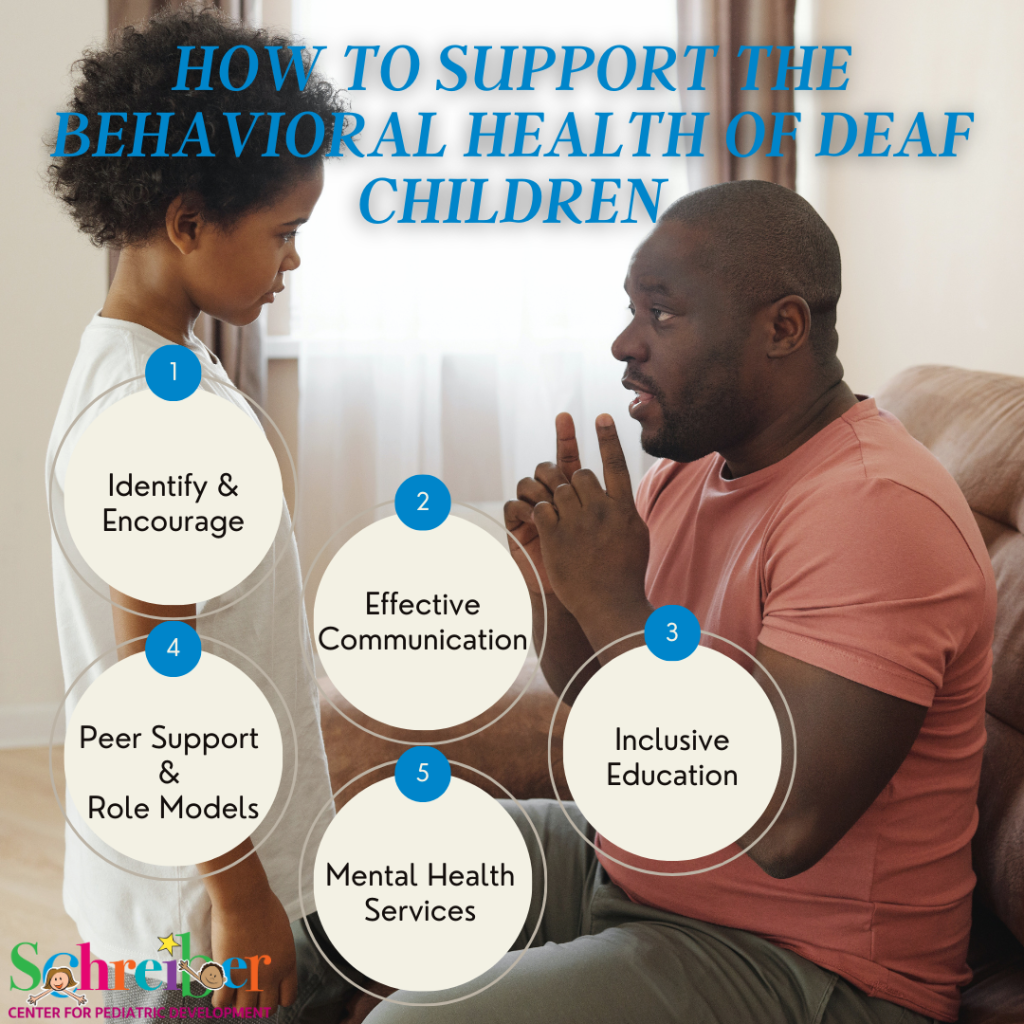
The Challenges Of Being Deaf In A Hearing School
September 20, 2023School can be a difficult space for any child to navigate, but when you add the additional challenge of being deaf, the difficulties only grow. By shining a light on the unique challenges that children who are deaf encounter in school we hope to help minimize them.
The Communication Barrier: A Key Obstacle
One of the most significant challenge that Deaf children face in school is the communication barrier. This barrier extends beyond the classroom, affecting interactions with both peers and teachers. Deaf children often encounter difficulties in fully understanding and engaging with lessons due to limited access to auditory information. This, in turn, can lead to academic delays, as their access to information is restricted.
Furthermore, a lack of awareness and training among teachers about the specific needs of deaf children can increase these challenges. Without proper training, educators might struggle to adapt their teaching methods to accommodate different learning styles and communication preferences. The result is that the potential of deaf students may go unrecognized and underdeveloped.
Social Isolation and the Emotional Impact
Education is not just about gaining knowledge; it also shapes a person’s social development. For children who are deaf, this can be a double-edged sword. Limited communication opportunities can isolate them from their hearing peers, making it difficult to form friendships and engage in extracurricular activities, clubs, and sports. A traditional classroom settings might not provide the necessary environment for effective communication, which can lead to a sense of isolation.
The consequences of such isolation are significant. Deaf children may face bullying and teasing due to their differences, which can lead to emotional distress and lower self-esteem. The lack of social interaction can hinder their emotional well-being and overall growth.
Access to Support Services and Inclusive Education
Access to appropriate support services is necessary to help mitigate these challenges. Sign language interpreters and note-takers help ensure effective communication and learning for deaf students. However, these services are not always available or properly implemented in educational institutions.
Inclusive education, which ensures all students receive equitable opportunities for learning and participation, is a cornerstone for breaking down barriers. Creating an environment that fosters inclusivity goes beyond just providing services—it entails changing attitudes and practices, and embracing the unique perspectives and strengths that each student brings.
The Power of Sign Language
A key solution to bridging the communication gap lies in the widespread adoption of American Sign Language (ASL). ASL is not just a language; it’s a pathway to breaking down communication barriers and fostering understanding between deaf and hearing individuals. By promoting ASL as a fundamental skill, we can lay the groundwork for a more inclusive and supportive educational experience for deaf children.
Building an Inclusive Future
In celebration of the International Week of the Deaf, it’s crucial to remember that the challenges faced by deaf children in school are not insurmountable. Through appropriate accommodations, specialized support services, comprehensive teacher training, and the promotion of sign language, we can create an environment where all children, regardless of their hearing ability, have equal access to quality education and social integration.
If you child is Deaf and you are interested in learning more about how Schreiber’s Pediatric Therapies can help your child visit: http://www.schreiberpediatric.org/therapy-services/
As a nationally recognized pediatric facility, the Schreiber Center for Pediatric Development provides family-centered education and therapy programs for infants, children and adolescents with disabilities, developmental delays, and acquired injuries. Our goal-oriented approach maximizes each child’s ability to function independently within the community.
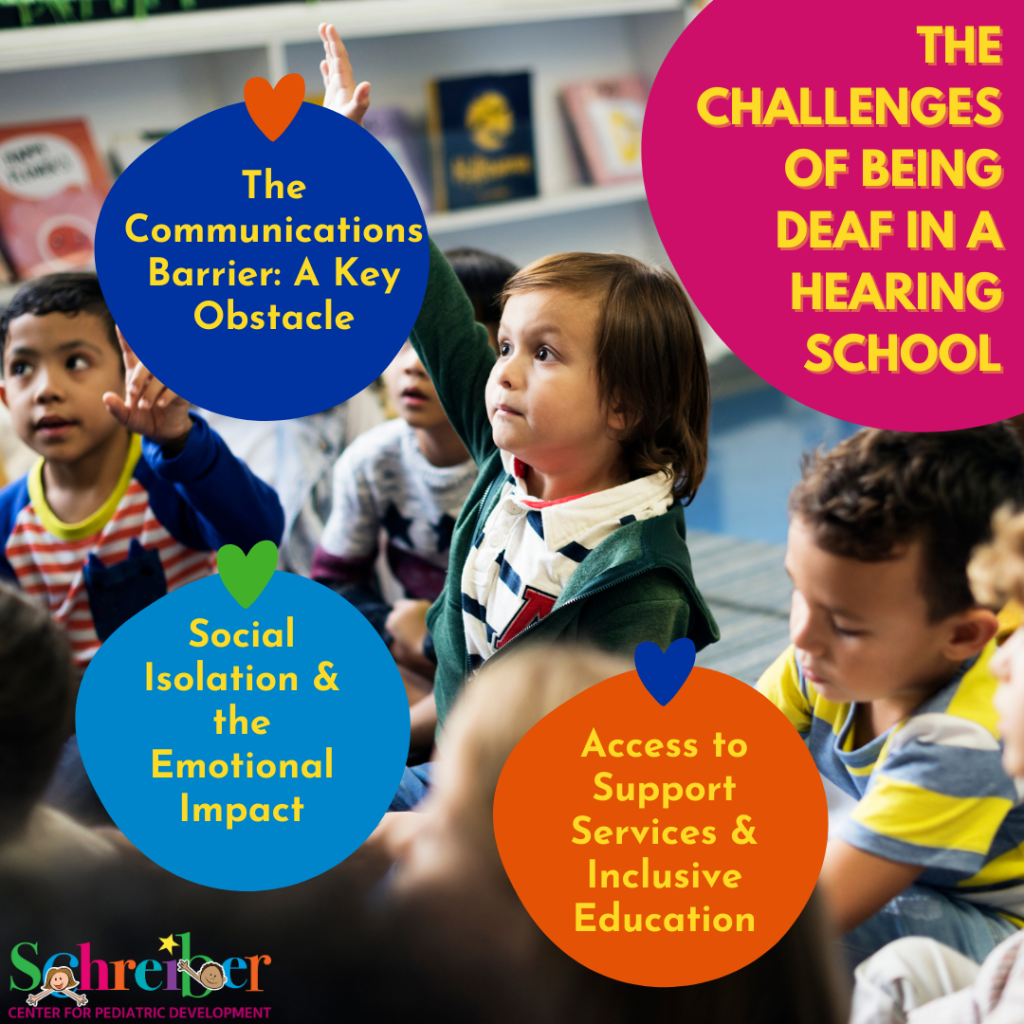
12 Communication Milestones to Look for in Deaf Children
September 19, 2023When it comes to the developmental journey of babies and children who are deaf, American Sign Language (ASL) communication milestones play an important role. Knowing what unique milestones to look for in babies, toddlers, and children who are deaf, allows caregivers to better understand the progression of communication skills. This article outlines 12 communication milestones caregivers of deaf children should look for to help guide their children on their unique communication journey through ASL.
Birth-6 Months: Building the Visual Foundation
1. Visual Tracking: From birth to six months, babies who are deaf begin to visually track moving objects and people. This foundational skill paves the way for their engagement in sign language communication.
2. Eye Contact: Establishing eye contact with caregivers and responding to visual cues is crucial for effective communication in ASL. Babies who are deaf develop this ability, enabling meaningful interactions.
3. Attention to Visual Stimuli: Infants who are deaf often display heightened attentiveness to colorful objects and gestures. This is because they rely on their sense of sight for communication input.
6-9 Months: Early Gestures and Interaction
4. Early Communication Gestures: Deaf babies might initiate simple gestures like waving “bye-bye” or raising their arms to be picked up. They could also display signs of wanting more, pointing at objects, or imitating gestures.
5. Initiating and Responding to Gestures: Babies who are deaf begin building the foundation for back-and-forth communication by both initiating their gestures to express needs or interests and responding to gestures from caregivers.
8-12 Months: Transition to First Signs
6. First Signs: The transition from gestures to recognizable signs like “milk,” “eat,” or “mom” starts around 8-12 months old. These initial signs become the building blocks for more intricate communication.
7. Understanding and Following Directions: Deaf babies gradually grasp the ability to comprehend and follow simple sign language directions like “come here” or “give me.”
12-36 Months: Forming Complex Communication
8. Combining Signs: Toddlers who are deaf begin combining signs to form two-word phrases between 1 and 3 years old. This progression allows them to express more complex thoughts and desires.
9. Expressing Preferences and Desires: As toddlers learn more ASL, they use signs to voice preferences, wants, and dislikes. This allows them to increase their ability to actively engage in conversations.
10. Narrative Skills: As they progress and broaden their signing vocabulary children who are deaf are able to convey simple stories and describe events using ASL, nurturing their narrative skills.
3+ Years: Maturing Communication Abilities
11. Understanding and Using Complex Syntax: As children who are deaf grow, their ASL skills evolve to include more complex sentence structures and grammatical features, enhancing their overall communication abilities.
12. Participating in Group Conversations: Proficiency in group conversations, topic tracking, and turn-taking is a significant milestone for children who are deaf using ASL. This skill underscores their ability to engage actively in social settings.
Remember that every child follows their own developmental path. Early exposure to ASL, consistent interaction, and access to a supportive environment are all important to helping babies, toddlers, and children who are deaf develop ASL skills. Celebrating these communication milestones helps to foster a culture of inclusivity, understanding, and effective communication for all.
If you child is Deaf and you are interested in learning more about how Schreiber’s Pediatric Therapies can help your child visit: http://www.schreiberpediatric.org/therapy-services/
As a nationally recognized pediatric facility, the Schreiber Center for Pediatric Development provides family-centered education and therapy programs for infants, children and adolescents with disabilities, developmental delays, and acquired injuries. Our goal-oriented approach maximizes each child’s ability to function independently within the community.
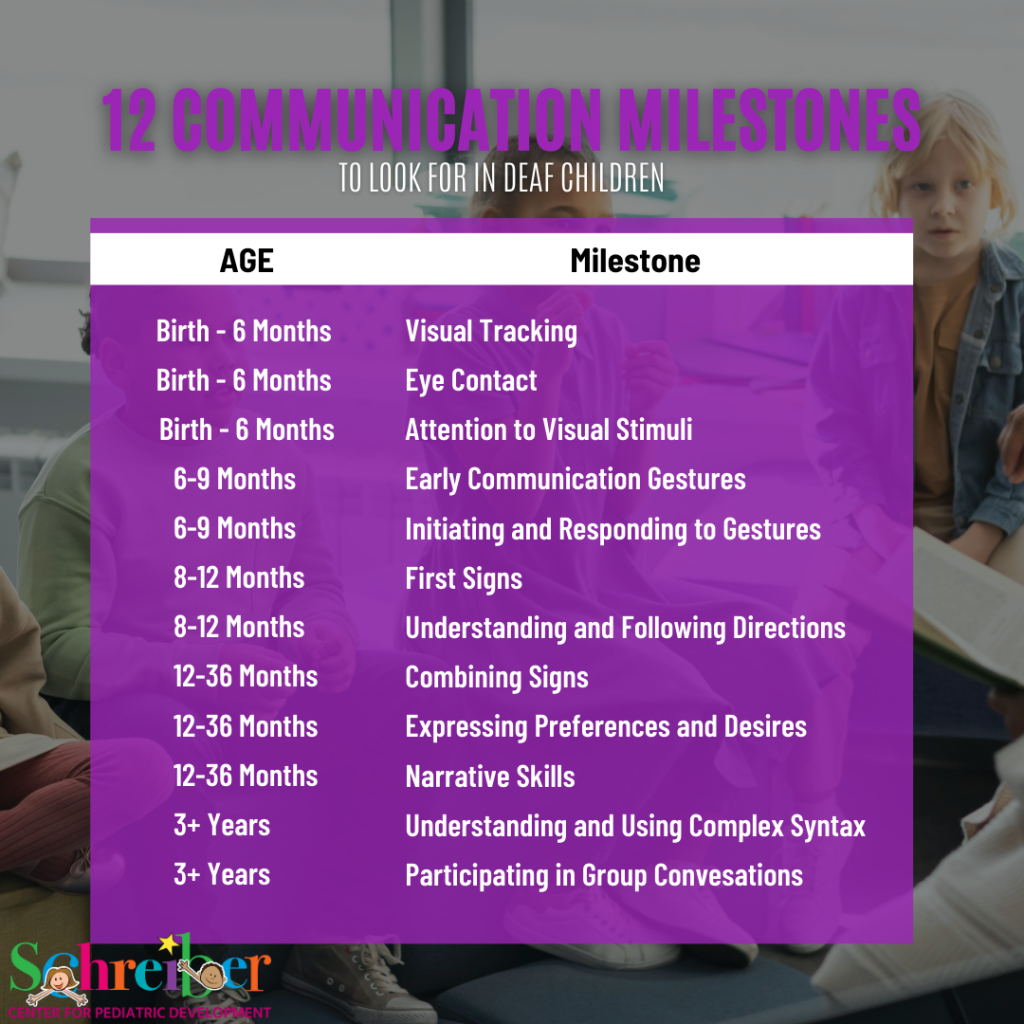
How to Communicate with the Deaf Community
September 18, 2023In a world that strives for diversity and inclusivity, it’s essential to recognize and celebrate different cultures and communities. Today marks the beginning of the International Week of the Deaf, a time dedicated to fostering understanding and connection with the Deaf community. This presents a wonderful opportunity to delve into the realm of inclusivity and explore some invaluable tips for engaging meaningfully with people who are Deaf.
Discovering the World of Sign Language
Taking the time to learn a few basic American Sign Language (ASL) signs and gestures is one of the most meaningful steps you can take to embrace inclusivity and engage with the Deaf community. You may think that learning an entirely new language sounds daunting, but taking the time to master even a few fundamental signs can go a long way in bridging the communication gap between the hearing and the Deaf.
Eye Contact, Facial Expressions, and Personal Space
Maintaining consistent eye contact when communicating with anyone is respectful, but especially important in conversations with people who are Deaf. When Deaf people talk to each other they are most often maintaining eye contact. While a hearing person may only see hands forming ASL signs, when it comes to communicating using ASL facial expressions convey tone, emotion, and context. Because facial expressions play a crucial role in sign language, it is important to make sure that when you are communicating with a person who is Deaf your face is well lit and able to be seen easily. As a visual language ASL also requires additional personal space, and maintaining that space shows both consideration and respect, promoting a welcoming atmosphere that encourages open communication.
When to Write it Out & Use Visual Aids
If you find yourself in a situation where complex information needs to be shared, and you are not fluent in ASL, it can be useful to use a pen and paper, or electronic notes device to communicate instead. Using visual aids is a great way to enhance communication with a person, or people, who are deaf, especially in group settings. Utilizing tools like presentations or written materials ensures that everyone in the group is on the same page.
Eliminating the barriers of misunderstanding and allowing for accurate exchange of information is important but remember that while this approach is practical and ensures seamless information sharing it can be alienating as it removes human emotion from the conversation. Learning basic ASL and using it before resorting to writing out your message can help maintain connection during the conversation.
Commit to Inclusivity Everyday
By taking steps to learn and use basic American Sign Language (ASL) signs, respecting the significance of eye contact, facial expressions, and personal space, and incorporating written communication and visual aids when needed, we can dismantle communication barriers between the hearing and Deaf communities. When we commit to inclusivity everyday, we can create meaningful interactions and change the world for the better. We challenge you to take these tips to heart and share them with your family and friends.
If you child is Deaf and you are interested in learning more about how Schreiber’s Pediatric Therapies can help your child visit: http://www.schreiberpediatric.org/therapy-services/
As a nationally recognized pediatric facility, the Schreiber Center for Pediatric Development provides family-centered education and therapy programs for infants, children and adolescents with disabilities, developmental delays, and acquired injuries. Our goal-oriented approach maximizes each child’s ability to function independently within the community.

Sam Leon-Durkee: Young man with a plan
April 19, 2022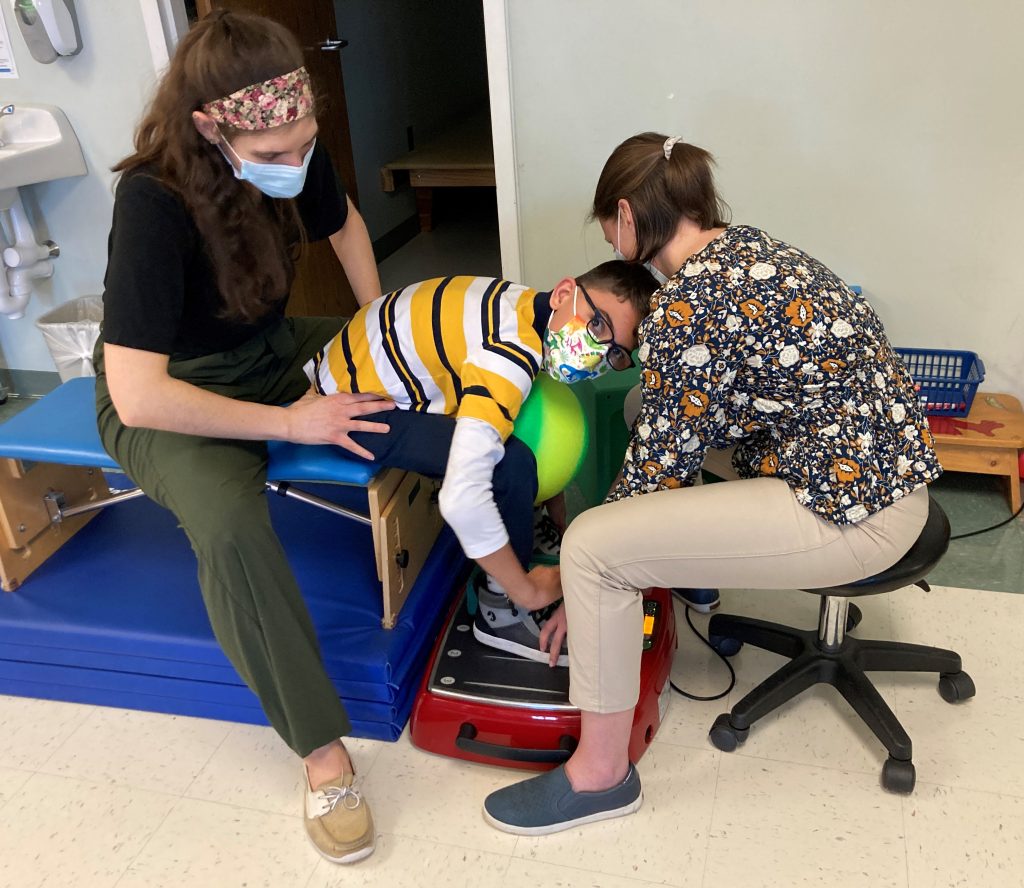
Sam Leon-Durkee started a recent physical therapy session working on a piece of equipment called a Galieleo vibration plate. He sat down on a bench, put his feet on the plate and, with the help of his physical therapist, Rachel Saufley, worked on standing up.
Sam was diagnosed with cerebral palsy at 18 months. He’s 12 now, and does a lot of work to increase his flexibility and mobility. The vibration plate helps reduce the muscle spasticity, or tightness, associated with CP so he can have a more effective therapy session.
Schreiber acquired the vibration plate in December thanks to a grant from the Gamber Foundation. Rachel said she uses it with Sam to help stretch his hamstrings. Sam put it a little differently.
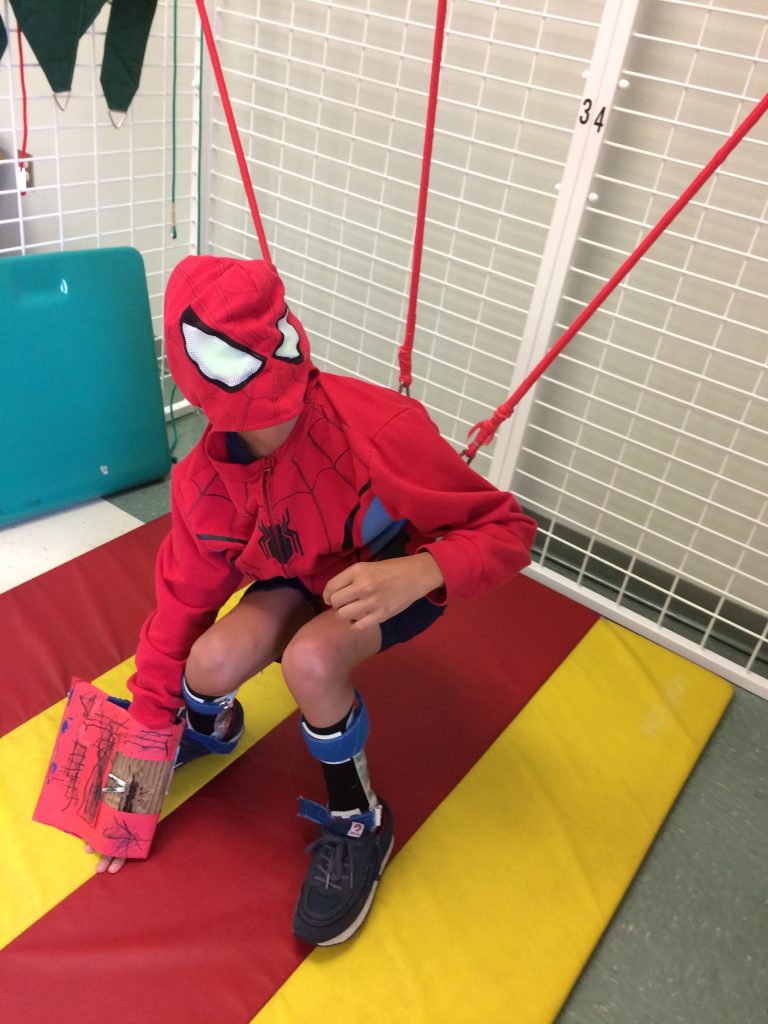
“It’s something new to torture the kids,” he said. “And by torture I mean help.”
He said it like he says a lot of things: with a mischievious smile.
His cerebral palsy makes it hard for him to walk or hold a pencil to write his name. But it has done nothing to hinder his social development.
He’s a talker, a natural storyteller with a vivid imagination and a quick sense of humor. His mom Casey Trone said Sam wants to work at Marvel Comics in New York City.
“I think he’s going to single-handedly write the next Marvel movie,” she said.
That’s the plan right now. For that to happen, there’s still a lot of work to do. Given how far he’s come, though, nobody would bet against it.
Sam was born prematurely in August 2009 and spent five months in the neonatal intensive care unit at Hershey Medical Center. Casey said she started Early Intervention services with Schreiber as soon as she received the diagnosis.
The EI services continued until he was 3. He had a muscle-lengthening surgery at age 4, which helped him make a lot of progress. A year or so later, he returned to Schreiber to resume physical therapy. Around the same time, he started school, first enrolling in Head Start when he was 4 and then starting kindergarten the next year.
“I was a little reluctant,” said Casey, who lives in the Penn Manor School District. “I would have liked to have a little more time for him to develop physically. But he did really well in kindergarten. He’s had an aide with him every year, so the support has been really good.”
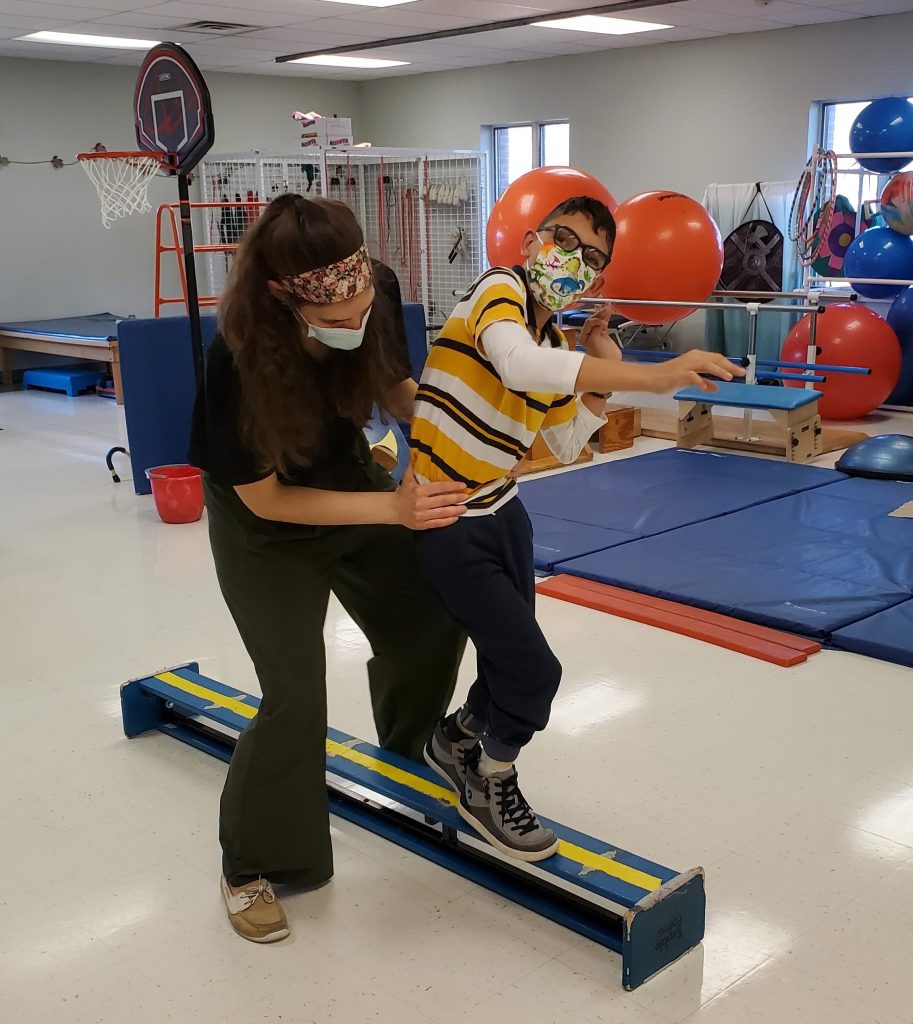
He has continued to do well in school, including his middle school years at Manor Middle School.
“He has shocked me,” Casey said. “I remember when I first got the diagnosis of CP, I had no idea what was going to happen. There are so many different forms of the disease. I went so far as to have weight-loss surgery because I didn’t know whether I was going to be able to take care of him. But he’s doing very well.”
A lot of that she attributes to their experience at Schreiber.
“It’s helped me to understand what is possible and what to do and how to take the next step with him,” she said, her voice cracking and a tear rolling down her face. “My life now is to get him to be the best he can be.”
The physical challenges haven’t been the only ones for Casey, Sam and Sam’s twin sister Isabelle. The twins’ father, Henry Leon-Rivera, passed away in 2016. Two years later, Casey brought Mike Trone into their lives.
“They were just about to turn 8,” Mike said. “When we met the first time, we went out for ice cream. We talked a lot about the ‘Cars’ movies. He’s a smaller guy, and he was even smaller then. But he can talk. He knows what he’s talking about. And he has comedic timing. He’s full of life.”
Now it was Mike’s turn to wrestle with his emotions, and he reached over to grasp Casey’s hand.
“I’ve learned so much from him,” he said finally. “I didn’t know anything about CP when Casey and I met. I guess I had a picture in my mind. And he was nothing like that. Resilience is how he approaches day-to-day life. He’s definitely changed my outlook on the world.”
And now the three-person family is four: Casey and Mike married in 2021. She’s financial coordinator with the Library System of Lancaster County. He’s a Realtor with Keller Williams Keystone. Together, they are rebuilding life as a family. And coming to Schreiber to help Sam become his best self, to fulfill his plans of telling the next stories in the Marvel universe.
“I work really hard every day to give Sam the best life I can,” she said. “And I know he meets me halfway to give his best. We all do what we gotta do, and we’ll get there.”
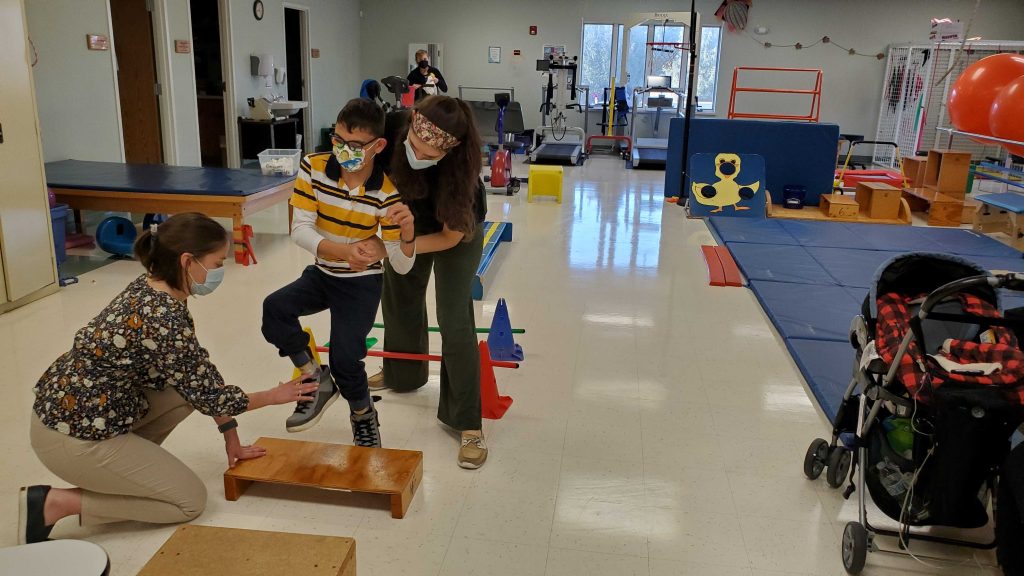
Ellery McIndoe learns to soar at Schreiber
March 29, 2022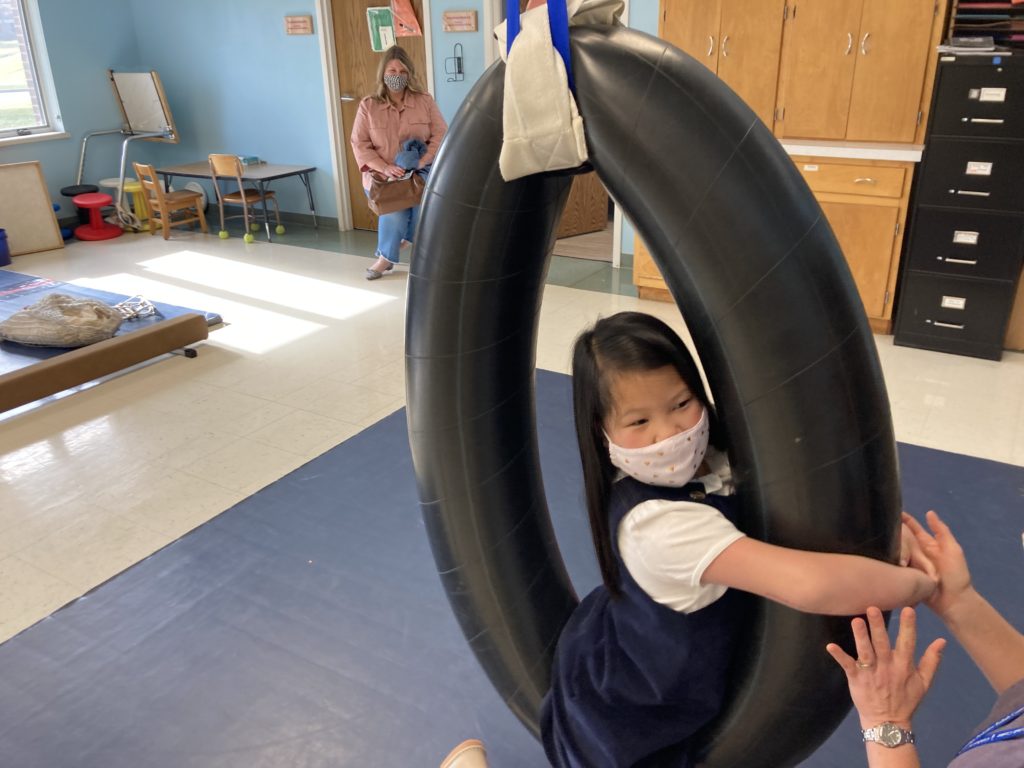
Ellery McIndoe has had challenges most people can’t imagine. She also has lots of personality, a big, bright smile and a ton of can-do spirit. In the scheme of things, the challenges don’t seem to be holding her back from being a happy, active, smart 7-year-old little girl.
For her mom Alison, though, getting to this point hasn’t been the easiest journey.
Ellery was born in China, and she spent the first five years living in the orphanage system that China maintains to care for children the government considers to have severe special needs.
Alison, a single parent, had wanted to adopt a young child from China, and she spent several months looking at the profiles of different children with special needs.
“It was a little scary initially,” Alison said. “I passed her by the first few times. You don’t necessarily know the extent of their situation. It could be a heart condition. It could be blindness. I knew very little about her condition.”
She finally learned that Ellery had been diagnosed with arthrogryposis, a rare condition that developed in utero. The condition causes contractures, where one or more joints become permanently fixed in a bent or straightened position, and muscle weakness. Alison knew Ellery had some surgeries in China but not much else about her care.
She adopted Ellery in November 2019. First, she had to help Ellery adjust to her new situation. Five years old, living in a new country with a new language and a new family — it was overwhelming.
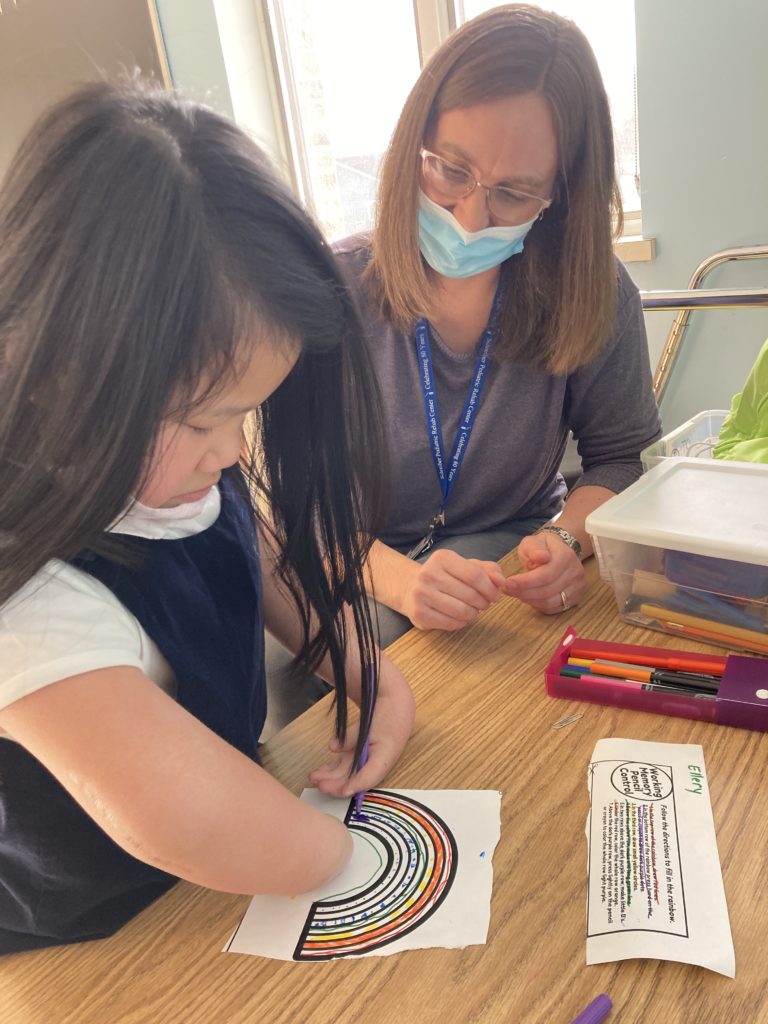
“She was very timid and very frightened the first few weeks,” Alison said. “I could literally not be out of her sight at all. She came to work with me, even meetings with clients, and she would just sit there and pretend to take notes, like I did. Or she would make pretend phone calls. She likes to do whatever Mama does.”
Then Alison went to work finding the medical care Ellery needed, starting with surgeries at Nemours Children’s Hospital in Wilmington, Del. In the summer of 2020, doctors operated on her right elbow, wrist and thumb, with the goal of giving her more flexibility in the affected joints and improving her fine motor skills so she would better able to do daily tasks like feeding herself.
They started coming to Schreiber for services about a year ago. Ellery receives occupational therapy with Amy Mostellar and physical therapy with Christen DeSarro.
“In OT, it’s really a struggle to figure out ways to help her care for herself,” Alison said. “She has fingers, but they don’t move a whole lot. She’s learned to adapt. She can do a lot with her toes: She can color, and she can almost tie her shoes. She loves to swim.
“Just the fact that she sees she can do these things gives her so much confidence. … She just runs with it. She beams.”
Ellery’s newfound confidence shows up in little ways. Like when she smiles and laughs and squeals, “Push me higher,” on the swing in OT.
When she first started at Schreiber, she had trouble grasping her hands together to hold on while she swung. Now? No problem. Those little fingers are stronger.
Or the way she can maintain her balance in PT.
“When she started, she fell all the time,” Alison said. “I worried about her. I thought I might have to get her a helmet, because when she falls, she can’t really catch herself with her arms. Now, she rarely falls. Her balance is so much better. She can walk up the steps now by herself.”
Alison paused.
“I’m still close by though,” she added, with a smile.
She described the progress as slow and steady.
“You almost don’t realize it’s happening. But then you see her on the swing and you think: ‘She couldn’t do that before.'”
The shy, quiet 5-year-old has given way to a confident, bubbly 7-year-old, a foodie (she loves anything spicy) who enjoys sewing (with her feet!) and play dates with friends.
And her experience at Schreiber has played an important part of that evolution.
“(Schreiber) is a wonderful place, and we’re so thankful this is here. This is a joyful place, and Ellery fits right in.”
For the Kiss family, dedication mixed with gratitude
March 4, 2022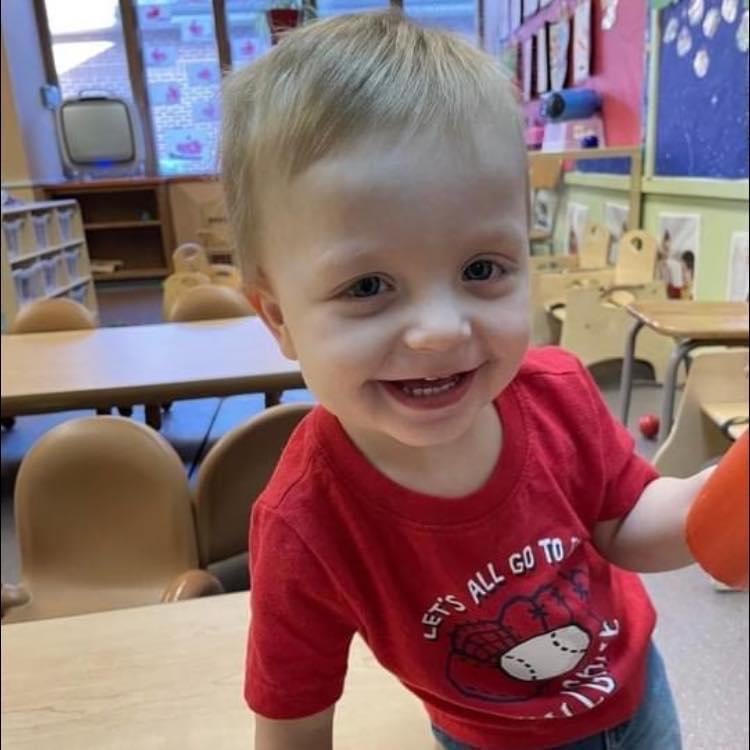
The complications for Colton Kiss started the moment he was born. His mom, Tara Kiss, said doctors used vacuum extraction to help with delivery.
The procedure “caused four intracranial brain hemorrhages,” Tara wrote in an email, “as well as a blood clot on his cerebellum, which is the part of the brain that controls movement, balance and speech.”
Colton was quickly transferred from Lancaster to Children’s Hospital of Philadelphia, widely known as CHOP, where he spent the next two weeks in the neonatal intensive care unit (NICU). Tara, living in York at the time, stayed with her mother, Cathy Kiss. Cathy lives in Manor Township, and Tara drove back and forth to Philadelphia every day for those two weeks to be with Colton.
When Colton was 4 months old, a follow-up MRI showed the blood clot and hemorrhages were gone, but the clot left behind an area of damage on the cerebellum.
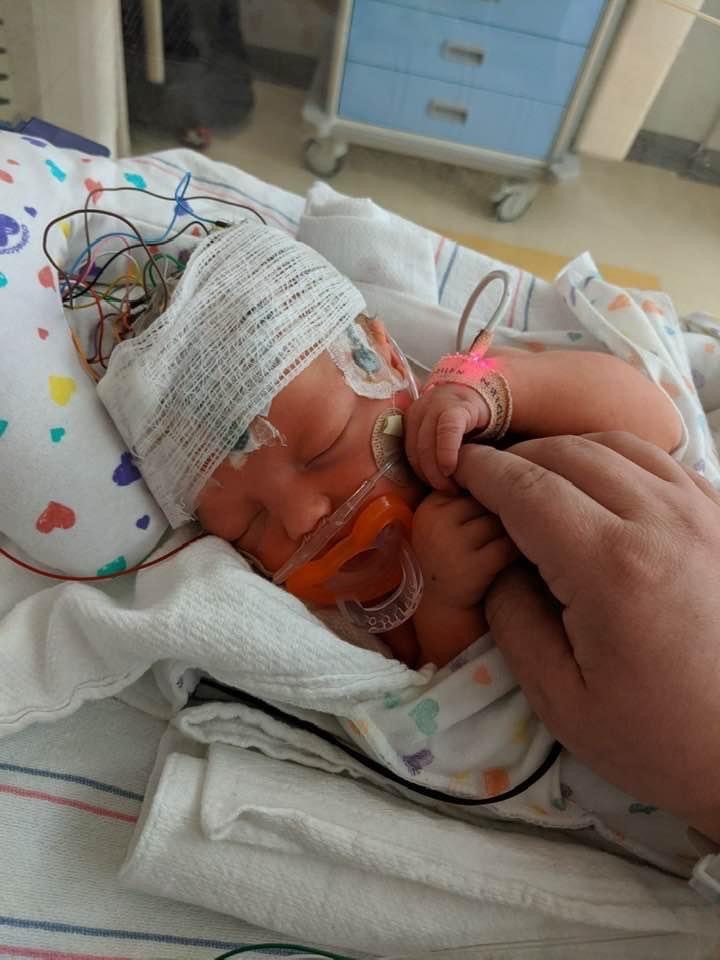
“We learned from his neurologist that we were looking at a long road of obstacles as that part of the brain is so important to everyday life — walking, talking, motor skills…,” Tara wrote.
CHOP referred them to Early Intervention and outpatient pediatric therapy. After doing some research and talking with friends, Tara knew she wanted to start services with Schreiber. Cathy’s best friend’s father, Joe Finger, had volunteered here with a group of other residents from St. Anne’s Retirement Community. Cathy also knew Michele DeBord, sister of Schreiber President James DeBord.
“Hearing about (Joe’s) experience and knowing Michele was so passionate about Schreiber, we were really comfortable (starting at Schreiber),” Cathy said.
Colton was born in March of 2020. Tara moved to Lancaster in December of that year to start services at Schreiber.
“We were immediately welcome by the Schreiber staff who are now pretty much our family,” Tara wrote. “Lisa (Moore, at the front desk) took us in under her wing and connected me to Jen Bachman to get Colton evaluated and started right away. We have been working with Miss Christen (DeSarro) for PT, Miss Kim (Martin) for OT and Miss Cassie (Glick) for speech. When we started, Colton was unable to sit unassisted, unable to feed himself solid food, unable to say any words at all.”
That was where Colton was in early 2021. Today? He still receives all three therapies, and he’s enrolled in Schreiber’s Circle of Friends Academy child care program, in the Toddler Room.
“Whether children are born healthy or born with already known obstacles, every child deserves a chance to be helped, and Schreiber gives every child a fair chance at a normal life.”
Tara Kiss, Colton’s mother
“It has not even been a year yet,” Tara wrote, “and he is now able to sit, stand alone and take his own steps on flat surfaces. He can feed himself any type of food he desires. He is working on his words and attempting new words almost daily. We are only in the beginning of this journey, but because of the dedication from our Schreiber family, Colton has a chance to live his life as normal as possible.”
Which is why Cathy reached out just about a year ago at this time offering to help with our first Cup O’ Cards fundraiser. The idea for Cup O’ Cards was simple: We bought a bunch of gift cards from local businesses, stuffed them into some sponsored coffee cups, then raffled off the cups.
“I heard about it from Michele, I looked at your website, and I decided to jump right in” by donating a card-filled coffee cup, she said.
Cathy, who runs her own home-based accounting business, CLK Accounting and Payroll Inc., reached out to a number of clients and asked them to donate money to buy gift cards or to donate cards from their business. We quickly added her CLK Accounting mug to the other cups, and it turned out to be popular with raffle ticket buyers.
She was happy to participate in the second Cup O’ Cards raffle, which starts March 28, and she plans to do two cups this year, including a Mystery Cup filled with a collection of surprise gift cards.
“I’ve already raised more than $600 in cash, which I’ll use to buy the gift cards,” Cathy said, “and collected two donated items for the Mystery Cup.”
Last year, with Cathy’s help, Cup O’ Cards raised about $27,000. This year, with her help again, we hope to raise even more. And that would be make a proud grandmother pretty happy.
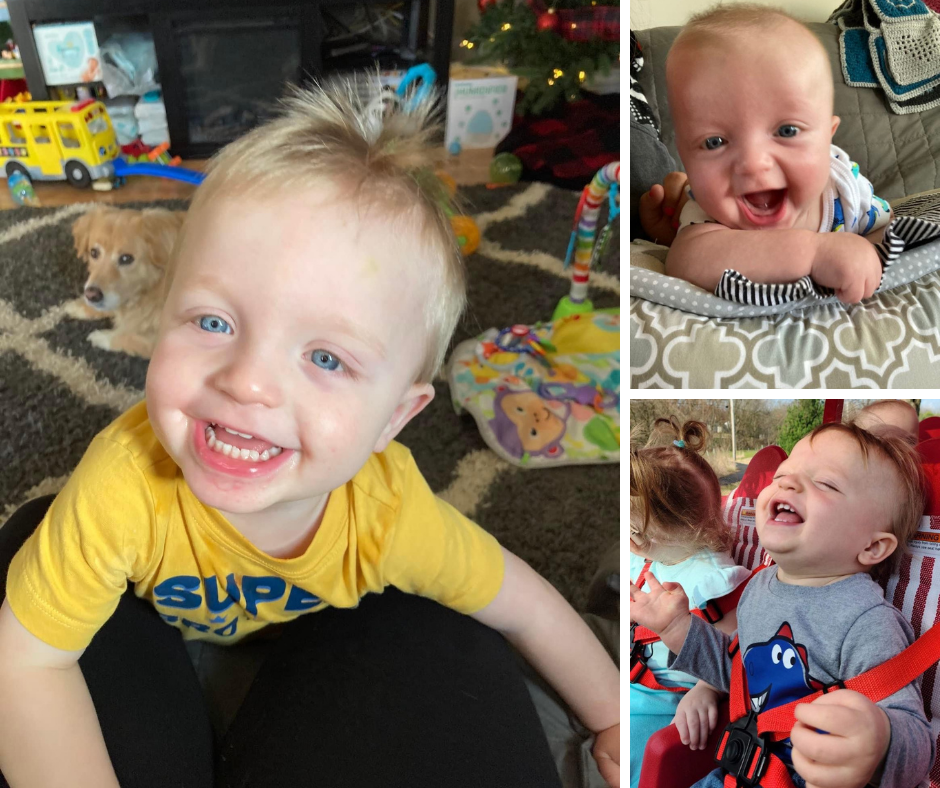
“That’s my boy,” she said. “And I see what Schreiber does for kids with my own eyes. (Colton) didn’t sit up until he was maybe 10 or 11 months old. He’s very delayed. To see his progress with the therapists is what I love about Schreiber.”
Tara said it this way in her email:
“… Whether children are born healthy or born with already known obstacles, every child deserves a chance to be helped, and Schreiber gives every child a fair chance at a normal life. That is something I will always support. We are forever grateful for Schreiber and the care my son receives. From his teachers at Circle of Friends Academy down to all of his therapists, thank you all for loving my son!”
Schreiber mom: From advocate for others to advocate for son
December 17, 2021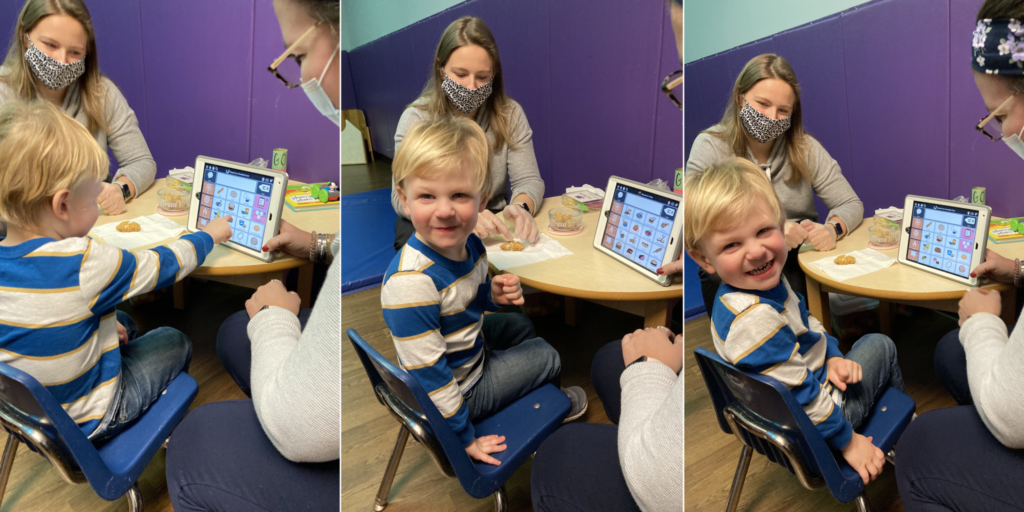
Amanda Katchur is a psychologist who has been an advocate for services that support children for a number of years. Now, she’s learning to advocate for her own child, and that’s a completely different experience.
It’s one thing to know professionally the impact that Schreiber’s services and Lancaster County’s Early Intervention program have on families. It’s another thing to see it personally.
Her daughter Bethany was diagnosed as an infant with torticollis, a condition in infants that causes a baby’s head to tilt constantly to one side. Thanks to the work of Schreiber therapists, Bethany’s torticollis is gone and she runs, jumps and dances just like any 6-year-old little girl, Amanda said.
Bethany’s little brother Leo, 3 years old, has an autism diagnosis, was born with mild hearing loss and also had some torticollis as an infant. The three issues combined have left him behind in several areas of development. When it was time for Leo to receive services through Early Intervention, at 6 months old, Amanda had no hesitation.
“I knew we wanted to come back (to Schreiber) because we had such a positive experience with Bethany,” Amanda said.
Leo has been in good hands his therapy services started. Catherine Donahue was his Schreiber’s Early Intervention specialist for home visits. Dorlas Riley was his speech-language pathologist. Denisha Roberts worked with him in physical therapy. And Bernie Hershey has been his occupational therapist.
I like to think that we’ve been fortunate to have, like, the dream team…, with all the experience they have with his issues.
AMANDA KATCHUR
“They were all really great,” Amanda said. “I like to think that we’ve been fortunate to have, like, the dream team to be quite honest with you, with all the experience they have with his issues.”
COVID has, at times, made the therapy more challenging, like when the family had to switch to telehealth services for a time. At those moments, she could see the lengths the Schreiber team would go to for a child.
When telehealth sessions switched back to in-person visits, the change and the lack of consistency caused some challenges for Leo, as it does for many kids on the autism spectrum.
“Bernie showed up at one point at our house in costume as Jessie from “Toy Story” to try to re-engage after telehealth with Leo a little bit,” Amanda said. “They just really always made an attempt (to find what) he was interested in and get into his world, which I appreciated so much.”
During a recent therapy session at Schreiber, Leo worked with Marli Hess, an intern in Occupational Therapy, and Maddy Sova, a speech-language pathologist. They were trying to help him become more comfortable with a different kind of food – in this case, a chicken nugget – and to improve his language skills by using a smart tablet to respond to questions.
“We are working on communication in whatever way Leo feels most comfortable,” Amanda said. “Today, you saw him working on some eating, because eating has been a struggle for us, too. So he’s been working on increasing his tolerance for different foods and different textures and things like that. But communication has been, I would say, the biggest one.”
Mom was impressed with the way Leo greeted a visitor to the session, smiling and waving. “He probably wouldn’t have done that six months ago,” she said.
EI services do make a difference
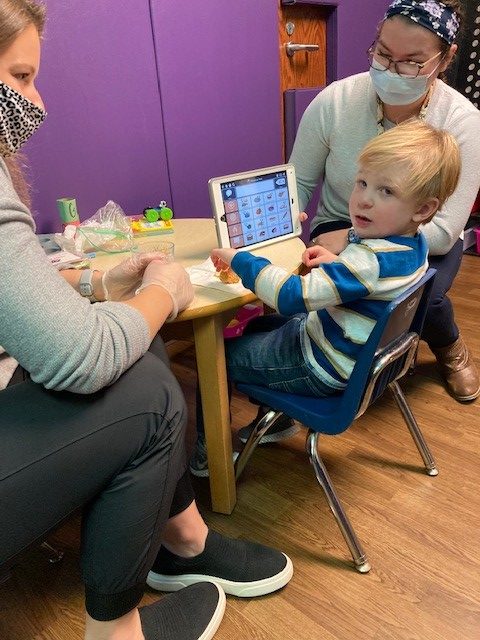
Mandy Kolb Lyons is a coordinator in Lancaster County’s Early Intervention services program. She sent this email to agencies that provide Early Intervention services after a recent presentation to the agencies by Amanda Katchur. Amanda presented at the PA Statewide Interagency Coordinating Council (SICC) meeting to share her family’s story and how Early Intervention supported them.
Here’s an excerpt from Mandy’s email:
“Amanda shared numerous examples of how you helped to coach, support, empower and guide her and her family. Amanda beamed as she shared the journey that her son and family had with Early Intervention and mentioned a few times how Early Intervention supported her entire family, including Leo’s big sister! Not only did Leo grow and progress throughout services, his entire family did. We can only hope that every family that participates in Early Intervention can walk away feeling similarly to how Amanda and her family did after participating in our services.”